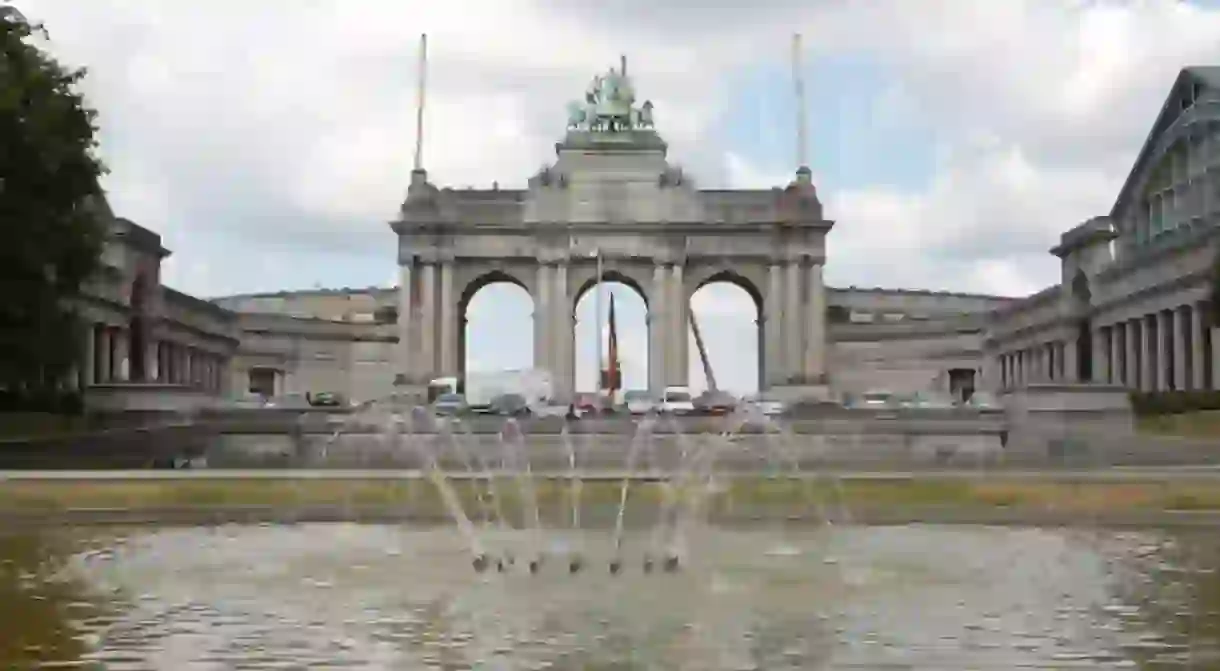History of The Triumphal Arch in 60 Seconds

As the dramatic gateway to a sprawling park built in honor of Belgium’s 50th birthday, Brussels’ Triumphal Arc was conceived to be a source of pride and joy to the capital. The monumental structure is the focal piece of a U-shaped arcade that houses three museums, and in front of it, an esplanade of geometric greens stretches out as far as the eye can see.
The Cinquantenaire Arch—literally “50-year-old”—is perhaps most impressive when viewing it from the impeccably kept gardens of the Cinquantenaire Park in spring. Colorful flowerbeds leading up to its middle bow, and the surrounding arcade naturally guides the eye towards the imposing structure. Up top, a patinated bronze sculpture shows a woman riding a chariot pulled by four horses and waving a flag. The female charioteer represents Brabant, an ancient seat of power in the region, and further down the arch, other personifications of Belgian provinces show up in statue form as well.
The arch is an outspoken example of a Leopold II project and was a significant part of the “Builder King’s” bid to spruce up the capital in hopes of lending prestige to the new nation. The inscription on the top statue’s pedestal, “This monument was erected in 1905 for the glorification of the independence of Belgium,” says as much. The year 1905, though, is 25 years after Belgium blew out 50 candles. In fact, a wooden-and-plaster backup was used for the 1880 festivities and World Fair since the grand undertaking proved hard to get off the ground. Afterward, Leopold’s vision, which was heavily inspired by Paris’ Arc de Triomphe, bumped into a government reluctant to spend too much money on the monument.
Eventually, the structure would be completed in 1905, but not before the architect of the Champs-Elysée’s Petit Palais, Frenchman Charles Girault, redrew the original plans by his deceased Belgian colleague Gédéon Bordiau. Hundreds of workers sweated non-stop during the building of the thing, using electrical lighting to keep the progress going at night, a first for Europe. Along with a sophisticated system using suspension bridges that made it possible to work on three levels at once, this approach turned the building site into a minor attraction of its own.
Fun fact: You can stand on top of the arch and enjoy a panoramic view of the park and the European quarter by entering the Military Museum and following the signs that say “arcades.”













